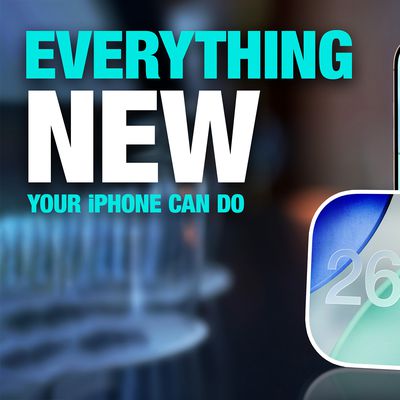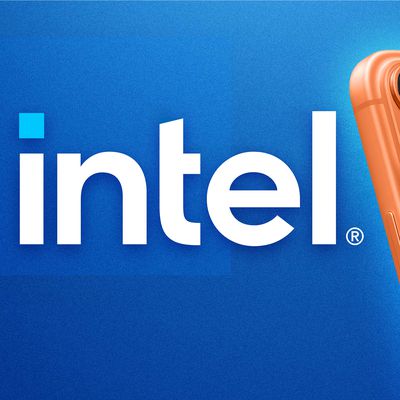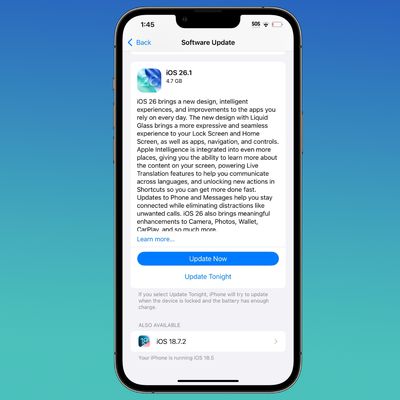With the next-generation version of iOS and other 2025 software updates, Apple is planning to change its numbering scheme. Rather than iOS 19, which would logically follow iOS 18, Apple is instead going to call the update iOS 26. Apple plans to use 26 across all of its platforms (the number representing the upcoming year), which will presumably be less confusing than having iOS 19, macOS 16, watchOS 12, and visionOS 3. But what does the change mean for the iPhone?

If Apple is looking to streamline naming, it could make sense for future iPhone models to follow the same year-based numbering. An iPhone 26 or iPhone 26 Pro that launches with iOS 26 would be more logical than an iPhone 17 that runs iOS 26, at least until that iPhone 26 needs to be updated to iOS 27 or iOS 28.
Year-based numbering for iPhones would make it clear to consumers when an iPhone came out. The average iPhone user that doesn't upgrade on the regular probably can't tell you the year that their iPhone launched, because there's no obvious link between the iPhone 14 and 2022, or the iPhone 16 and 2024.
Apple may already have a naming conundrum in the works where some kind of transition will make sense. This year, we're on track to get the iPhone 17. In 2026, the iPhone 18, and in 2027, the iPhone 19. But 2027 is the 20th anniversary of the iPhone, so will Apple want its 20th anniversary device to be the iPhone 19? Apple didn't make that choice in 2017 at the iPhone's 10th anniversary, and we never ended up with a iPhone 9 because we got the iPhone X instead.
Apple uses year-based numbering for its Macs, though not overtly. The MacBook Air is just the MacBook Air, but when you're looking for tech specs or comparison info on Apple's site, you'll find that the latest model is in fact the MacBook Air (M4, 2025). iPhones could also just be "iPhone" and appended in the same way.
There is a disconnect in Mac naming and the way Apple is doing software update naming going forward, though. Macs are named for the year they're released, but iOS and its sister updates are going to be named for the coming year on launch. iOS 26 in September 2025, iOS 27 in September 2026, iOS 28 in September 2027, and so on. Mac-like numbering for the iPhone would be the sensible choice instead of the year-ahead numbering, but it's doubtful that Apple will want to launch an iPhone (2025) running iOS 26.
Apple could also go with iPad numbering for the iPhone in the future. iPads aren't named like iPhones, and have historically used generations. The low-cost iPad, for example, was the iPad (5th generation) and then (6th generation) and (7th generation) and so on. More recently, Apple is using chips to differentiate between different generations of the iPad. So there's the M2 iPad Air, and the M3 iPad Air, along with the A16 iPad (11th generation) and the A17 Pro iPad mini. Chip-based naming probably won't work for the iPhone like it does for the iPad and some Macs because there are multiple iPhones that use the same chip. Apple would need to do something like iPhone (A19), iPhone Air (A19), iPhone Pro (A19), and iPhone Pro Max (A19), which is no better for marketing.
Apple might not change iPhone numbering at all, given that naming across iPads, Macs, iPhones, and other devices has never exactly been straightforward. Whether Apple intends to streamline device names going forward may become clearer at the June 9 Worldwide Developers Conference. We'll hear about the plan to go from iOS 18 to iOS 26 at the keynote event, and the way that Apple frames it might just provide some insight into whether we can expect a similar change for the iPhone to match.
























